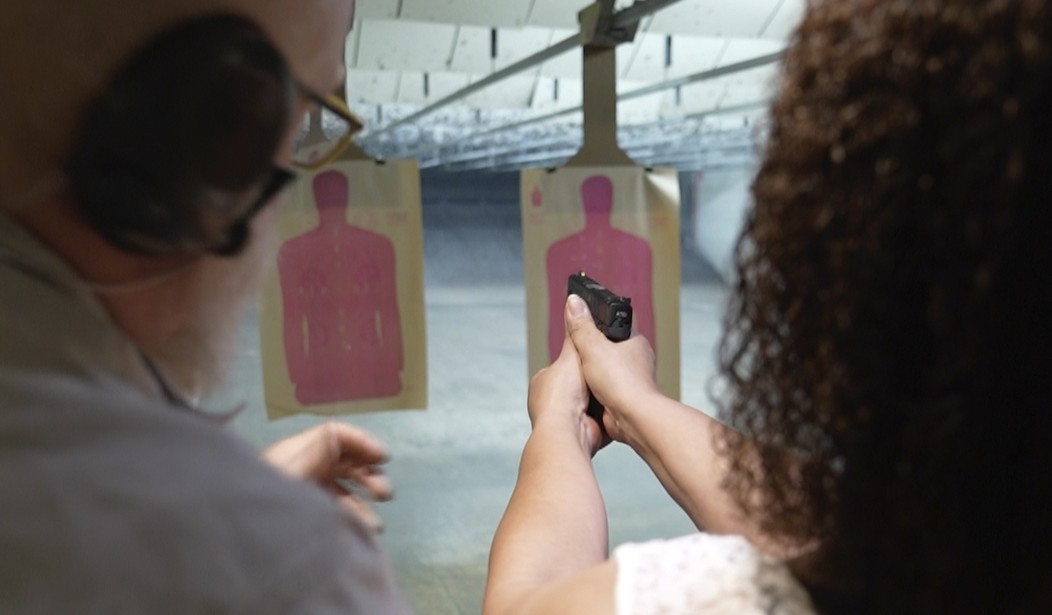Do adults under the age of 21 possess a right to bear arms in self-defense? According to New Jersey Attorney General Matthew Platkin and 18 of his Democratic colleagues, the answer is "no." Of course, most of those AGs don't believe adults older than 21 have the right to bear arms either, but in this particular case the anti-gun attorneys general are challenging a federal court decision in Pennsylvania that confirmed the text, history, and tradition of the Second Amendment and our right to keep and bear arms encompasses a right to carry without any exceptions for young adults.
Last month a Third Circuit panel concluded 2-1 that Pennsylvania's law barring concealed carry for adults under 21 violates their Second Amendment right, rejecting the state's argument that, historically, the right to keep and bear arms didn't kick in until citizens were at least 21 years of age. Instead of appealing to the Supreme Court, the state is instead asking for an en banc review by the entire Third Circuit, and Platkin and his his anti-gun buddies are now weighing in to support the request.
“Gun violence is a public health crisis that threatens the health and safety of all New Jerseysans, including our kids,” said Attorney General Platkin. “The Third Circuit’s recent decision wrongly strips States of a necessary tool to protect their residents from violence. The Constitution does not prevent Legislatures from adopting commonsense safety measures like minimum age restrictions, and I hope the Third Circuit will reconsider its misguided approach.”
The brief explains that the panel opinion, if not corrected, will raise questions about the constitutionality of similar statutes in New Jersey and more than 30 other states with age restrictions on firearms access. Those statutes are constitutional because they are consistent with the historical tradition in this country. States have enacted similar laws for over 150 years.
The attorneys general argue that the opinion should be reheard because its reasoning, if adopted elsewhere, could threaten the states’ ability to defend and enforce all manner of firearms regulations.
There's nothing in the Third Circuit's decision that says states can't adopt minimum age restrictions for bearing arms, only that those limitations can't apply to adults. And despite the state's contention that the national tradition of gun ownership encompasses carry bans for under-21s, the Third Circuit found the historical record bereft of any analogous laws, at least when it comes to the Founding Era.
While the Supreme Court has not held that all constitutional rights that have been made applicable to the states must be construed according to their public meaning in 1791, the Commissioner has not articulated a theory for defining some rights according to their public meaning in 1791and others according to their public meaning in 1868. Moreover, Bruen has already instructed that historical evidence from 1791 is relevant to understanding the scope of the Second Amendment as incorporated against the states. Accordingly, to maintain consistency in our interpretation of constitutional provisions, we hold that the Second Amendment should be understood according to its public meaning in 1791.
We thus set aside the Commissioner’s catalogue of statutes from the mid-to-late nineteenth century, as each was enacted at least 50 years after the ratification of the Second Amendment. What is left is an eighteenth-century statute that supposedly supports the contention that Pennsylvania’s current restriction on 18-to-20-year-olds is a “longstanding, presumptively lawful regulation[.]” Specifically, the Commissioner directs us to Pennsylvania’s Act of August 26, 1721, which prohibited “carry[ing] any gun or hunt[ing] on the improved or inclosed lands of any plantation other than his own[.]”
As the Third Circuit panel pointed out, there was no age-based restriction in that 1721 law (which, by the way, was adopted a full 70 years before the right to keep and bear arms was enshrined in the U.S. Constitution). It was a time, manner, and place restriction for gun owners of all ages, not a prohibition on young adults exercising their right to carry.
That's why Platkin and his anti-gun colleagues are hoping to convince the Third Circuit to take Lara v. Evanchik en banc; to get the court on the record in favor of using the time period when the Fourteenth Amendment was ratified as the basis for determining whether or not there are any historical analogues to modern day restrictions on the right to keep and bear arms. The historical record shows that there were at least some additional restrictions that weren't in place in 1791, though it's arguable that the handful of statutes cited by Pennsylvania represent a true tradition and not just outlier ordinances that, even at the time, didn't comport with the Second Amendment's text.
Even if Pennsylvania is successful in getting the entire Third Circuit to revisit Lara, there's no guarantee the appellate court will find in favor of the state. The Third Circuit has already concluded in another en banc decision that the federal prohibition on gun ownership for anyone convicted of a crime punishable by more than a year in prison is unconstitutional, and frankly, the judges on the court already have all the evidence they need to conclude that yes, young adults possess the right to keep and bear arms alongside their freedom of speech and their Fourth Amendment right to be secure in their persons and property from unnecessary searches and seizures.









Join the conversation as a VIP Member